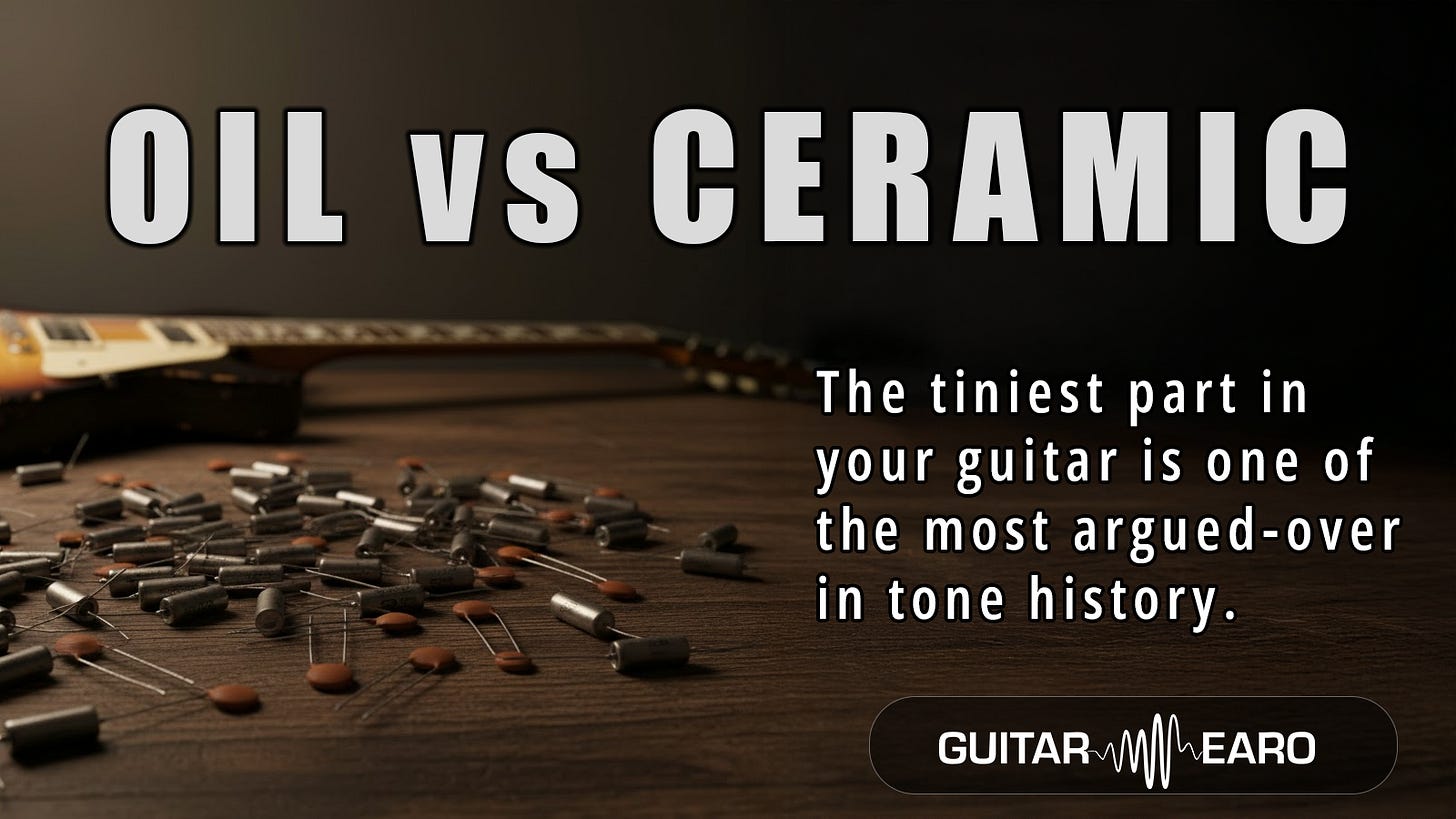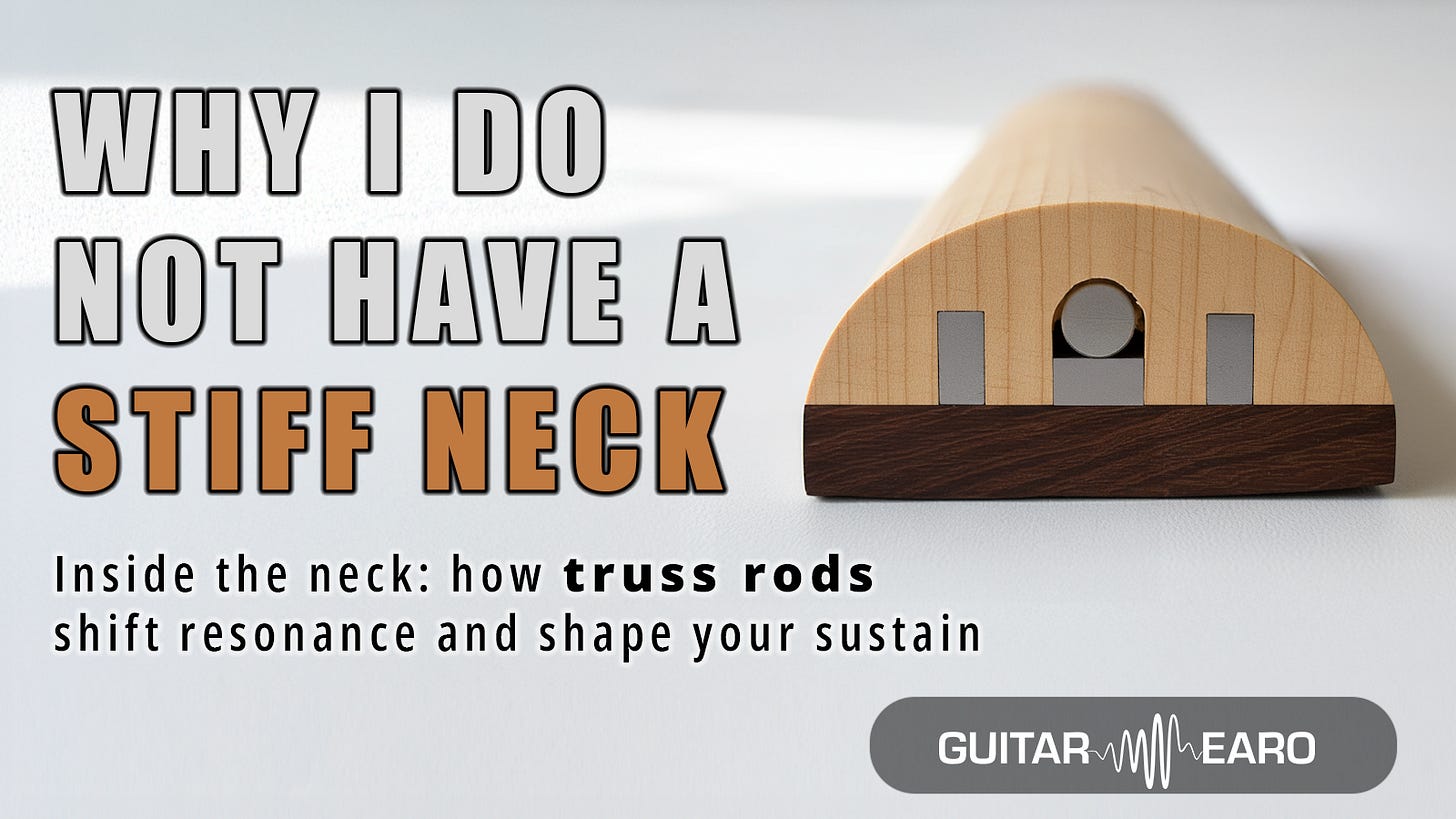Most players think of guitar cables as plumbing: they just carry the signal from A to B. Tone nerds know better. That simple coil of copper is not a neutral messenger: it’s an active filter, and it has been shaping guitar tone for decades.
Let’s dig into why your cable may be the most overlooked “pedal” on your board.
The Physics in Play: Why Cables Aren’t Neutral
Every passive electric guitar pickup is a coil of wire. Add the guitar’s volume/tone pots and a cable, and you’ve built a resonant RLC circuit:
R = Resistance (copper losses, pots, and contact resistance).
L = Inductance (the pickup coil).
C = Capacitance (the guitar cable).
That trio doesn’t just pass a signal: it creates a resonant peak followed by a natural roll-off of treble.
A short, low-capacitance cable shifts the resonance higher, letting more top end through.
A long, high-capacitance cable drags the peak downward, shaving highs and making the guitar sound warmer or duller.
The effect is not subtle: a 20 ft cable at 30 pF/ft can add 600 pF of capacitance. Pair that with a Strat single-coil (around 2–3 Henries inductance) and the resonant peak can shift from 4–5 kHz down into the 2–3 kHz range.
That’s the difference between “sparkle” and “smoke.”
Hendrix and the Coil of Fate
In the 1960s, coiled guitar leads were popular. They looked groovy, stretched without tangling, and… they had brutal capacitance (sometimes 1000+ pF).
Jimi Hendrix’s stage rig always included them. Plugged into a fuzz face and cranked Marshall, that coiled cable rolled off the fizz and made his fuzz smoother. The “violin-like” quality in some solos is not just his fingers and pedals; it’s physics stealing treble above ~5 kHz.
The funny part: Hendrix wasn’t “choosing” a cable tone filter. He just bought what was available. But to the ears of today’s geeks, those coils were a hidden part of his sound signature.
When Gear Got Too “Good”
Fast forward to the 1970s and ’80s. Cables got better, pedals went “true bypass,” and the market pushed for transparency. Suddenly, rigs that once had 20–30 ft of coiled lead + multiple buffers now had crystal-clear connections.
Many players found themselves saying: “Why does my guitar sound harsh?”
The answer? They had removed the very treble-loss that their heroes had unknowingly relied on.
Eddie’s 50 Feet of Genius
Few stories illustrate this better than Eddie Van Halen.
In his club days, Eddie ran a 50 ft cable into a bright Marshall. That length dulled the amp’s piercing highs just enough to create his fabled “brown sound.”
When he later switched to wireless, his signal path no longer had that capacitance load. Result: suddenly too much treble. His solution? He had his tech wire a capacitor directly into his guitar circuit to mimic the loss of a long cable.
Even Eddie, the master tinkerer, had to simulate the effect of a supposedly “bad” cable to keep his sound consistent.
Measuring the Difference
Tone obsessives often measure their cables in picofarads per foot (pF/ft). Here’s a quick guide:
Low-capacitance studio cable: ~15–20 pF/ft
Average straight guitar lead: ~25–35 pF/ft
Vintage-style coiled lead: 50–100+ pF/ft
So:
A 10 ft low-cap cable ≈ 200 pF
A 30 ft coiled cable ≈ 2000+ pF
That ten-to-one difference can completely reshape the guitar’s voice. The ear hears less “zing” above ~4–5 kHz, giving warmth or “polish.”
Purists vs Pragmatists
This is where the community splits:
Purists audition cables like pickups. They’ll choose a 15 ft curly lead for warm cleans, then a 6 ft George L’s for razor-sharp sparkle in the studio. Some even collect cables like pedals.
Pragmatists scoff: “Just EQ the amp!” To them, a cable is plumbing. Tone shaping is for the amp and pedals.
Both camps are right. But if you’ve ever swapped cables mid-session and thought, “Wait, that’s the sound,” you know which side you’re on.
Modern Workarounds
Buffers: A buffer pedal lowers the source impedance, so cable capacitance has almost no audible effect. That’s why Boss pedals (always buffered) can make a 30 ft rig sound bright again.
Treble bleed circuits: Often installed on volume pots to keep highs intact when rolling down.
Active pickups: Already buffered internally, so cable length matters far less. EMG fans will tell you they can run a 100 ft lead without losing top end.
But some guitarists actually miss the gentle roll-off of a passive cable. Buffers sound too clean, too “sterile.”
The Cultural Quirk
It’s delightful that something so mundane became part of rock lore:
Hendrix’s curly cords.
Eddie Van Halen’s 50 ft trick.
Studio players in the ’70s carrying different cables for “bright” vs “dark” guitars.
Today, cable companies even market capacitance as a tone spec, selling “warm” vs “transparent” models. What was once a technical flaw is now a boutique feature.
The Takeaway
Your cable is not neutral. It’s a filter, a dial, an EQ curve.
Short + low capacitance = maximum sparkle, unforgiving detail.
Long + high capacitance = smoother, rounder, less fizz.
Neither is right or wrong. Both are tools. The key is knowing the effect, and using it intentionally.
So next time you feel like your guitar “lost” something in the chain, check your feet. That boring black snake on the floor may be the most important tone shaper in the room.



